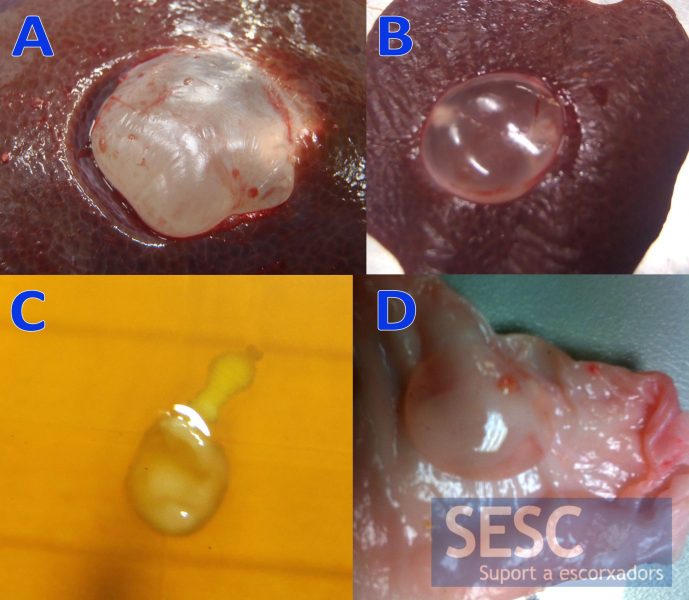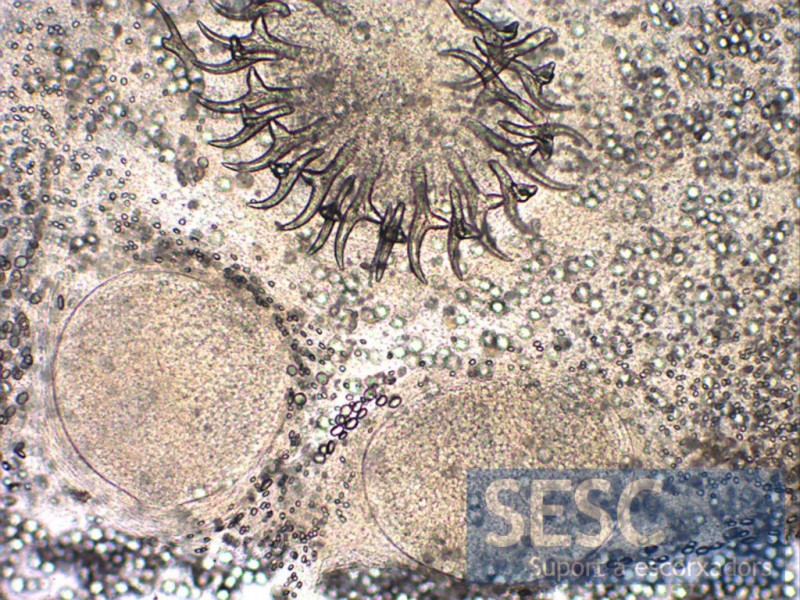Cysticercus in pigs
Recently an increased incidence of cysticercosis in some pig slaughterhouses has been noticed.
Cysticerci are the larval phase (metacestodes) of parasites known as tapeworms, which can be found in the intermediate hosts. The cases in which the pig may be an intermediate host are reviewed.
| Larval phase | Parasite | Definitive host | Intermediate host | Slaughterhouse findings | Comments |
| Cysticercus tenuicollis | Taenia hydatigena | Dog (canids) | Ovine, caprine and bovine.
Porcine and equine. |
Transparent vesicles on the surface of the liver or other abdominal viscera
The bladder evaginates in hot water and has a long neck with a single scolex with 4 suckers and a double crown of hooks. Hemorrhagic migration routes can be observed in the liver parenchyma. |
Its incidence in pigs is associated with the presence of ovine and caprine herds. |
| Cysticercus cellullosae | Taenia solium | Humans | Porcine
Humans |
Vesicles can be found in the skeletal muscles (masseters, tongue...) and myocardium. | It is a ZOONOSIS*. |
*WARNING: This zoonosis has been eradicated for years from the Spanish territory, it is essential, if a case is suspected, to send samples for laboratory confirmation. When declaring the reason for condemnation porcine cysticercosis (C.cellullosae) should not be confused with other non zoonotic parasites such C.tenuicollis.
The differential diagnosis of these lesions should also include: congenital serous cysts.

Figure 1: Examples of different cysts found in the abdominal cavity of pig carcasses, especially the liver (A and B) or adipose tissue (D). If viable when immersed in hot water the scolex may evaginate (C) a recording of this one can be seen in the video on Figure 3.

Figure 2: Observation of C.tenuicollis scolex at 100 magnification, 2 of the 4 suckers can be seen as well as the double crown of hooks.
http://youtu.be/EGMEjWa_VsM
Figure 3: Video of the cysticercus observed in Figure 1C.

